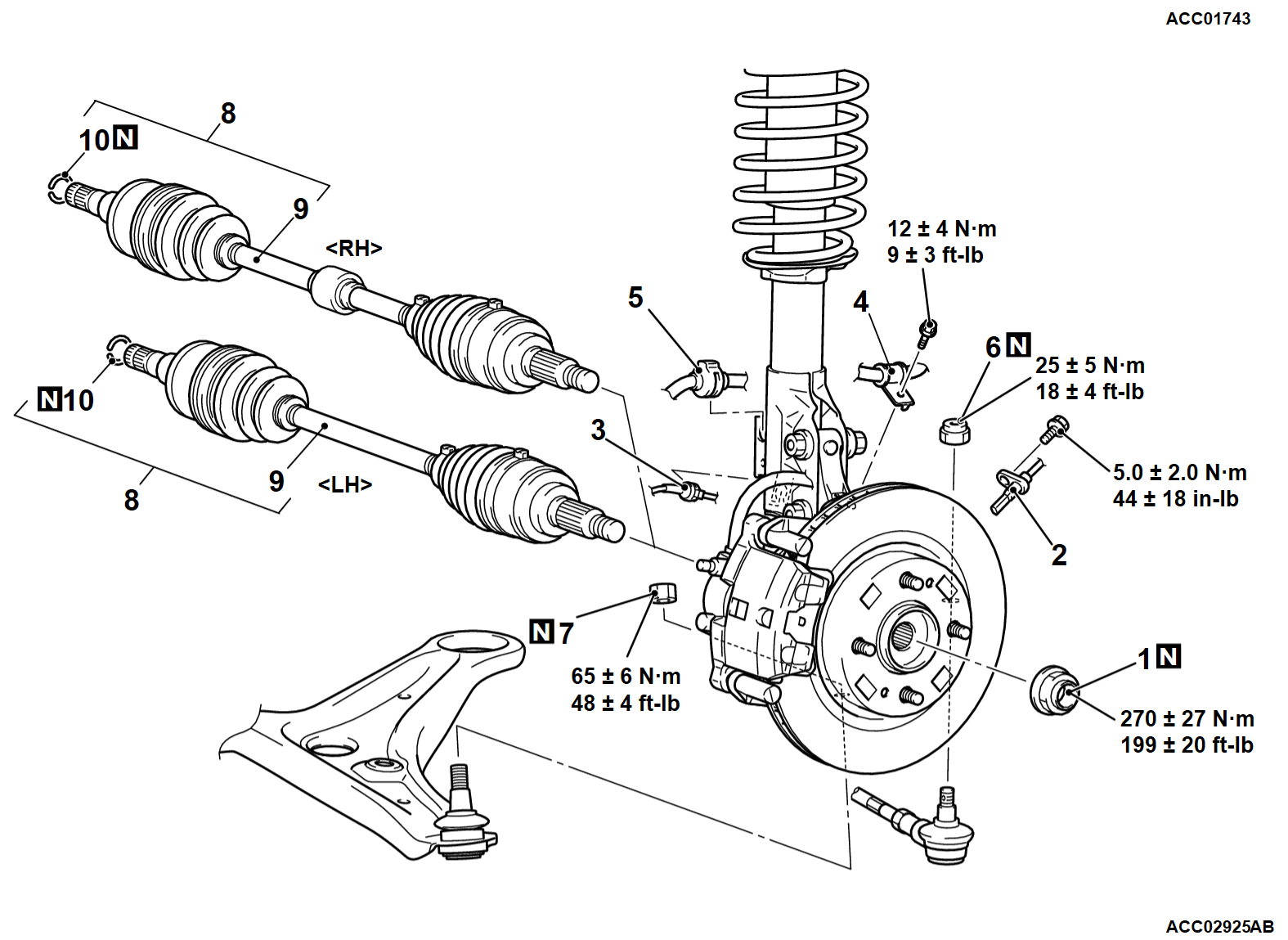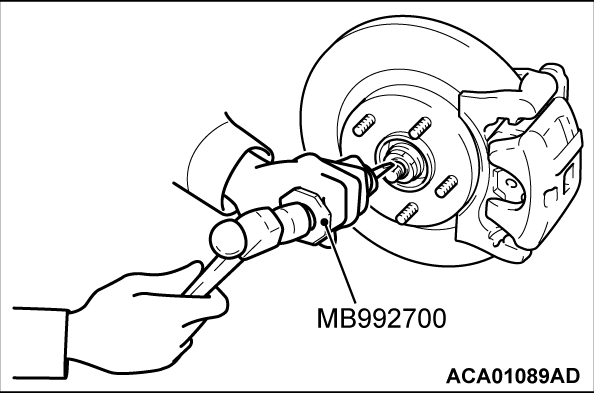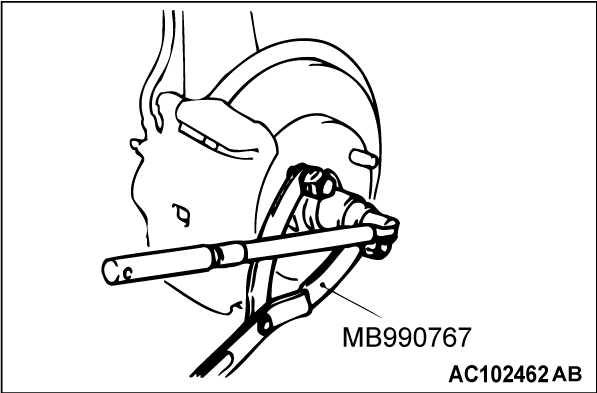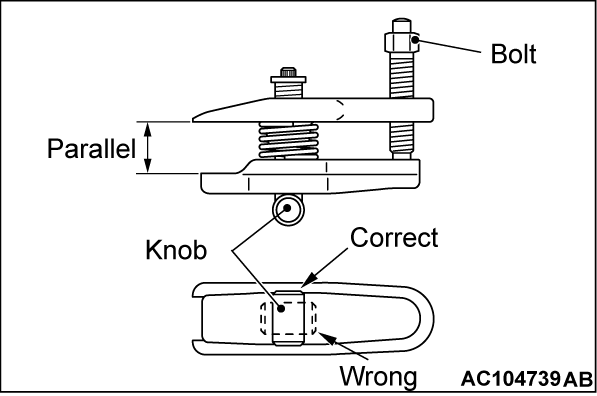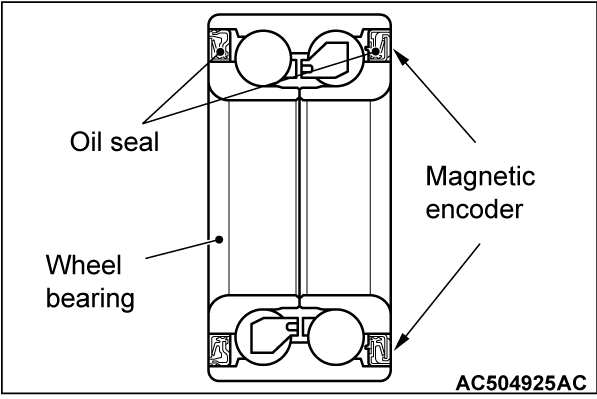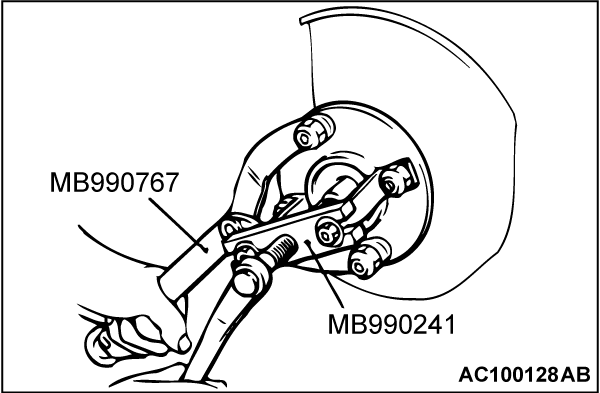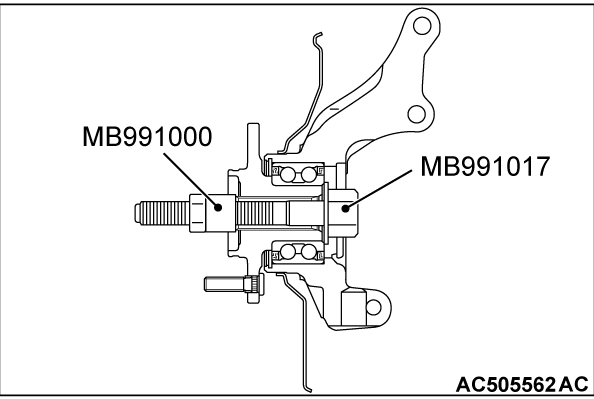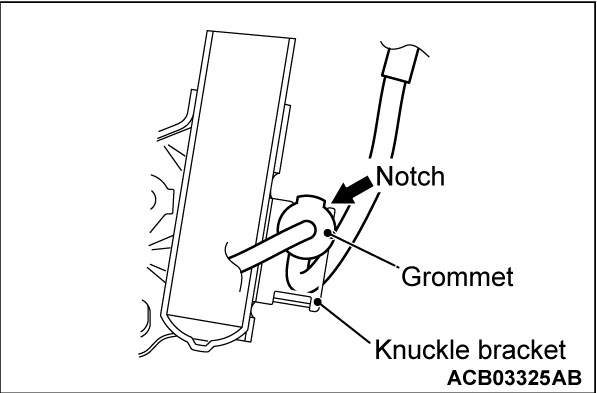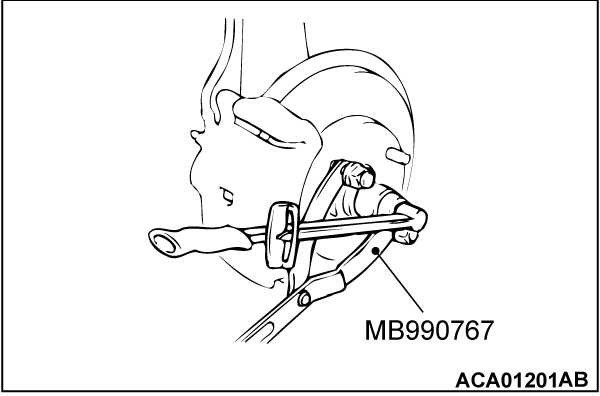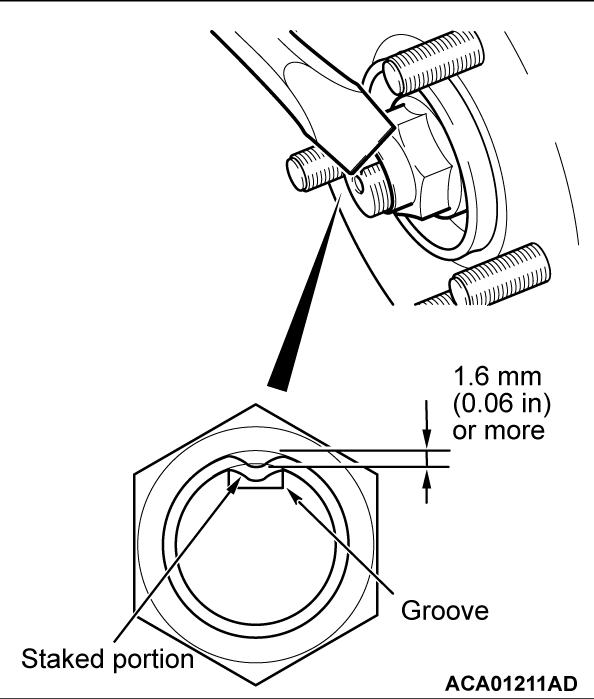REMOVAL AND INSTALLATION
| caution |
|
Required Special Tools:
- MB992700: Lock Nut Chisel
- MB990767: Front Hub and Flange Yoke Holder
- MB991897 or MB992011: Ball Joint Remover
- MB990241: Axle Shaft Puller
- MB990823: Spacer
- MB991017: Front Hub Removal and Installer
- MB992867: Front Hub Remover and Installer Spacer
REMOVAL SERVICE POINTS
<<A>> DRIVESHAFT NUT REMOVAL
1. The staked portion of the driveshaft nut must face upwards.
2.
Set the special tool Lock Nut Chisel (MB992700) in the groove of the driveshaft with its "UPPER" mark facing upwards. Then strike the staked portion of the driveshaft nut with the chisel and a hammer to raise up.
| caution |
|
3.
Raise up the staked portion of the driveshaft nut until it does not interfere with the shaft thread.
| caution | Be careful not to damage the thread of the driveshaft. |
4.
Use special tool front hub and flange yoke holder (MB990767) to counter the hub as shown in the figure to remove the driveshaft nut.
| caution |
|
<<B>> SELF-LOCKING NUT (TIE ROD END CONNECTION)/SELF-LOCKING NUT (LOWER ARM BALL JOINT CONNECTION) REMOVAL
| caution |
|
1. Install special tool ball joint remover (MB991897 or MB992011) as shown in the figure.
2. Turn the bolt and knob as necessary to make the jaws of special tool parallel, tighten the bolt by hand and confirm that the jaws are still parallel.
| note | When adjusting the jaws in parallel, make sure the knob is in the position shown in the figure. |
3. Tighten the bolt with a wrench to disconnect the tie rod end, lower arm ball joint.
<<C>> DRIVESHAFT ASSEMBLY REMOVAL
1.
If the driveshaft is seized with the hub, use the following special tools to push the driveshaft assembly out from the hub:
| caution |
|
- Axle shaft puller (MB990241)
- Front hub & flange yoke holder (MB990767)
2. While pulling the lower side of the brake disc toward you, remove the driveshaft assembly from the hub.
3.
Insert a pry bar between the transaxle case and the driveshaft, and then pry and remove the driveshaft from the transaxle.
| caution |
|
| caution | Do not apply the vehicle weight to the wheel bearing with the driveshaft assembly removed. If, however, the vehicle weight shall be applied to the bearing (in order to move the vehicle), tighten the following special tools to the specified torque {270 ± 27 N·m (199 ± 20 ft-lb)}:
|
INSTALLATION SERVICE POINTS
>>A<< OUTPUT SHAFT ASSEMBLY (RH)/DRIVESHAFT ASSEMBLY INSTALLATION
| caution |
|
>>B<< BRAKE HOSE GROMMET INSTALLATION
Insert grommet to knuckle bracket securely as shown. The notch of grommet must be coincided with the top end of knuckle bracket.
>>C<< DRIVESHAFT NUT INSTALLATION
| caution | Do not apply the vehicle weight on the front wheel hub assembly before fully tightening the driveshaft nut. Otherwise, the wheel bearing may be broken. |
1. Check the hub seated surface for damage or corrosion. Whenever solvent is used for removing the corrosion, the surface should be degreased.
2. Check that the new driveshaft nut can be turned smoothly by hand. Then tighten it until it is seated.
3. Using special tool MB990767, tighten the driveshaft nut.
Tightening torque: 270 ± 27 N·m (199 ± 20 ft-lb)
4. After tightening to the specified torque, check that the nut is seated securely.
5. Use the chisel and a hammer to stake the nut until the center in the staked portion reaches the shown dimension.
6. Finally, check that the nut is not cracked at its staked portion.
![[Previous]](../../../buttons/fprev.png)
![[Next]](../../../buttons/fnext.png)

